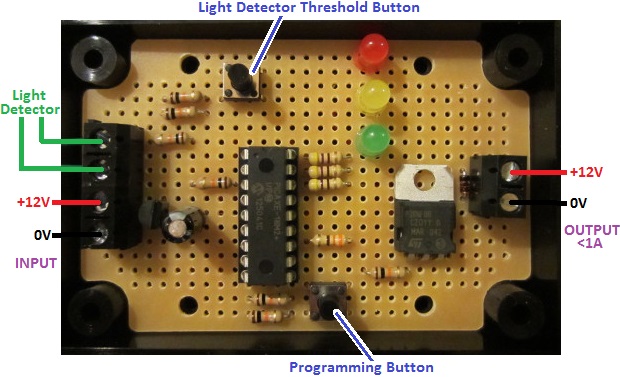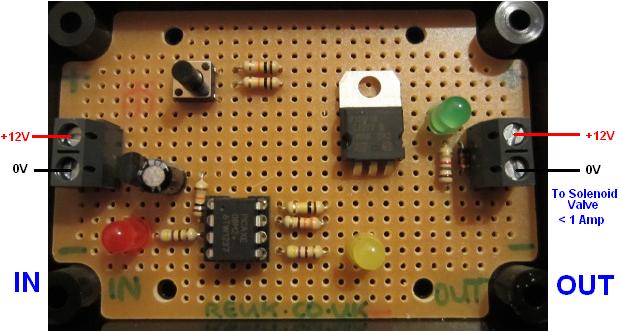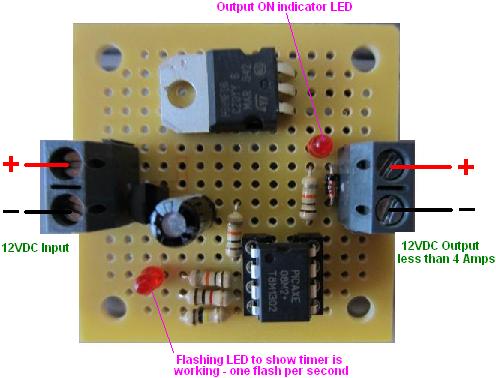Pictured below is a new device which mixes the features of the REUK Super Timer 3 and the REUK Dawn/Dusk Lighting Controller.
 The timer can be programmed with different ON and OFF time durations from 1 second to 99 hours with various modes of operation available. When the time is ON, there is a 12V output (rated at up to 1A) which can be used to control up to 10-12 Watts of 12V devices, or used to switch a relay if higher currents or different voltages are to be switched.
The timer can be programmed with different ON and OFF time durations from 1 second to 99 hours with various modes of operation available. When the time is ON, there is a 12V output (rated at up to 1A) which can be used to control up to 10-12 Watts of 12V devices, or used to switch a relay if higher currents or different voltages are to be switched.
The modification is the addition of a light detector (light dependent resistor) which is used to override the timer at night time. When the ambient light level is measured to be less than the user set threshold, then when the timer is ‘ON’ the output remains off.
This particular board is for an automatic fish feeder which directly drives a small motor, and the override is to prevent the feeder operating at night.
If you need a timer similar to this, email neil@reuk.co.uk with details of your exact requirements.

